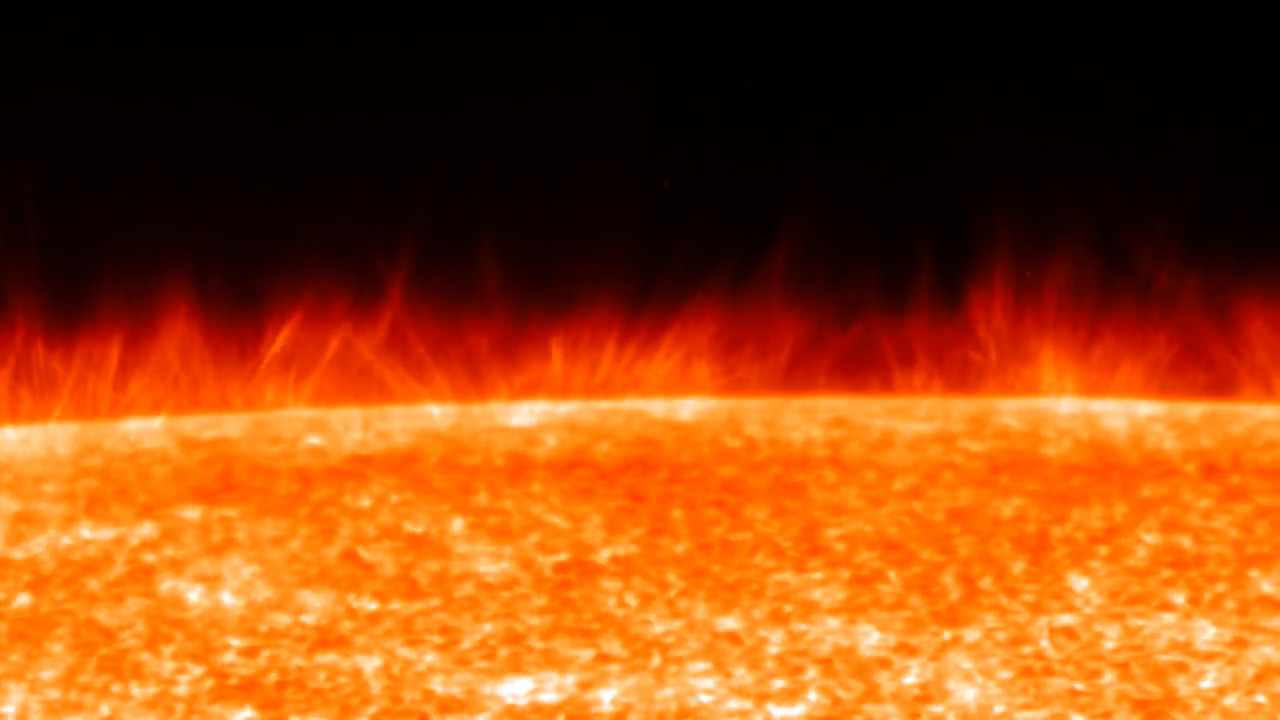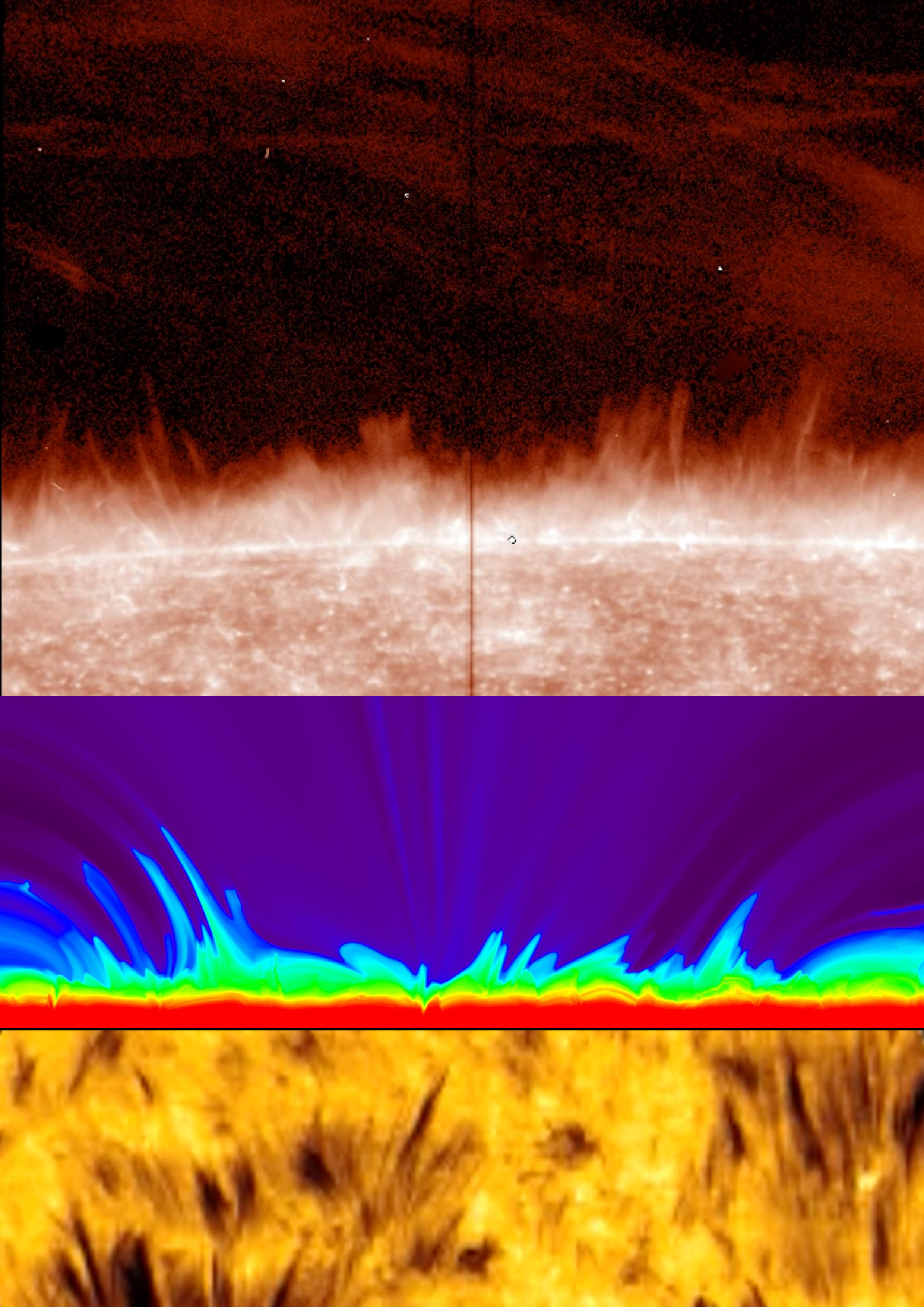Burning Mystery of the Sun's Plasma Jets May Finally Be Solved
The mystery of how jets of plasma explode from the surface of the sun and erupt into space thousands of times a day may finally be solved, a new study finds.
This discovery could help solve the long-standing mystery of why the outer reaches of the sun's atmosphere are so much hotter than the surface of the sun, the authors of the new study said. Solar scientists have described this counterintuitive phenomenon as akin to the air around a bonfire having a higher temperature than the fire itself.
For more than a century, astronomers have detected super-hot jets of plasma (clouds of electrically charged particles) called spicules permeating the lower solar atmosphere right above the surface of the sun, like giant pillars of fire popping up briefly on a flaming lawn. Thousands of spicules up to hundreds of miles wide erupt daily, hurling plasma outward at speeds of up to about 335,500 mph (540,000 km/h). "These jets of plasma are all over the sun," said study lead author Juan Martínez-Sykora, an astrophysicist at the Bay Area Environmental Research Institute in Petaluma, California. [How Hot Is the Sun?]

Spicules help supply the sun's outer atmosphere with hot plasma by reaching heights of up to 6,200 miles (10,000 kilometers) within 2 to 10 minutes. Therefore, they could help explain why the corona, an outer layer of the sun's atmosphere, is so much hotter than the surface of the sun. Whereas the solar surface is about 11,200 degrees Fahrenheit (6,200 degrees Celsius), the solar corona can reach about 3.5 million degrees F (2 million degrees C).
However, the way in which spicules arise remains poorly understood. Although previous research suggested that the sun's magnetic fields likely played a role in the origin of spicules, until now scientists could not explain all of these plasma jets' properties, such as how common they are.
Now, Martínez-Sykora and his colleagues have developed state-of-the-art computer simulations of the sun "that can finally explain something that happens so often on the sun," he told Space.com.
Get the Space.com Newsletter
Breaking space news, the latest updates on rocket launches, skywatching events and more!

The new computer models suggest that the origin of spicules involves three key steps. First, plasma on the surface of the sun churns, distorting magnetic fields and thus creating strong magnetic tension. Next, electrically charged atoms and electrically neutral particles mix above the surface of the sun, generating conduits for this building magnetic tension to escape. In the final step, the intense magnetic tension violently releases upward, driving powerful jets of plasma into space.
For their study, the scientists analyzed data from NASA's Interface Region Imaging Spectograph and the Swedish Solar Telescope. They found that their simulations re-created many features of real spicules, such as size, speed, places of origin and rates of creation.
"We finally got something that matches and allows us to understand many things related to this process," Martínez-Sykora said.
The researchers estimated that each spicule could supply the corona with about 11 million tons (10 million metric tons) of hot plasma. As such, they could play a key role in heating the corona.
The scientists detailed their findings in the June 23 issue of the journal Science.
Follow Charles Q. Choi on Twitter @cqchoi. Follow us @Spacedotcom, Facebook and Google+. Video edited by Space.com's Steve Spaleta.
Join our Space Forums to keep talking space on the latest missions, night sky and more! And if you have a news tip, correction or comment, let us know at: community@space.com.

Charles Q. Choi is a contributing writer for Space.com and Live Science. He covers all things human origins and astronomy as well as physics, animals and general science topics. Charles has a Master of Arts degree from the University of Missouri-Columbia, School of Journalism and a Bachelor of Arts degree from the University of South Florida. Charles has visited every continent on Earth, drinking rancid yak butter tea in Lhasa, snorkeling with sea lions in the Galapagos and even climbing an iceberg in Antarctica. Visit him at http://www.sciwriter.us









